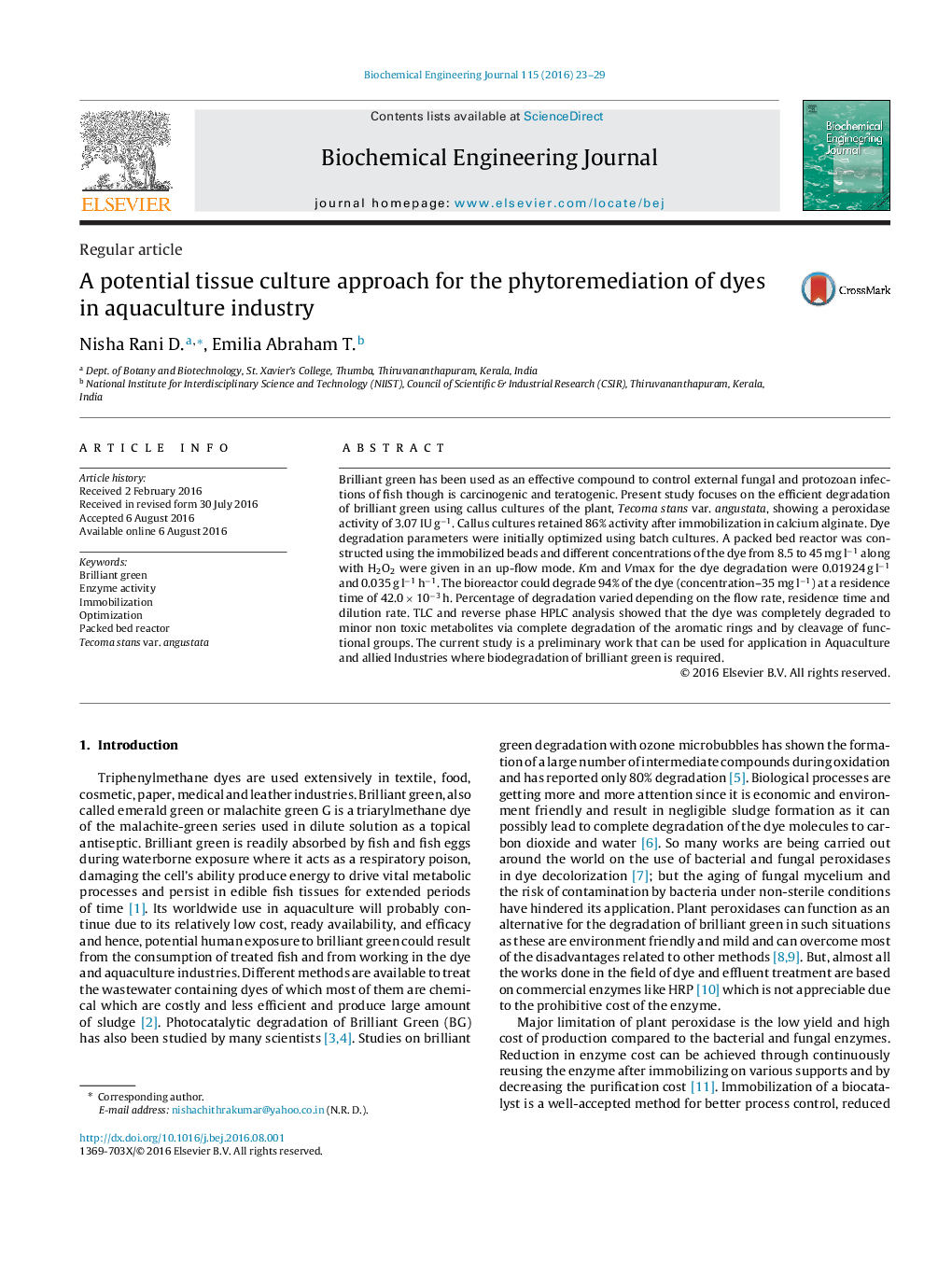| کد مقاله | کد نشریه | سال انتشار | مقاله انگلیسی | نسخه تمام متن |
|---|---|---|---|---|
| 4752217 | 1415999 | 2016 | 7 صفحه PDF | دانلود رایگان |
- Callus cultures of the plant, Tecoma stans showed good peroxidase enzyme activity.
- Peroxidase showed good storage stability when immobilized in calcium alginate.
- Tecoma peroxidase could effectively degrade brilliant green.
- Immobilized callus could be reused for 7 cycles of dye degradation in PBR.
Brilliant green has been used as an effective compound to control external fungal and protozoan infections of fish though is carcinogenic and teratogenic. Present study focuses on the efficient degradation of brilliant green using callus cultures of the plant, Tecoma stans var. angustata, showing a peroxidase activity of 3.07 IU gâ1. Callus cultures retained 86% activity after immobilization in calcium alginate. Dye degradation parameters were initially optimized using batch cultures. A packed bed reactor was constructed using the immobilized beads and different concentrations of the dye from 8.5 to 45 mg lâ1 along with H2O2 were given in an up-flow mode. Km and Vmax for the dye degradation were 0.01924 g lâ1 and 0.035 g lâ1 hâ1. The bioreactor could degrade 94% of the dye (concentration-35 mg lâ1) at a residence time of 42.0 Ã 10â3 h. Percentage of degradation varied depending on the flow rate, residence time and dilution rate. TLC and reverse phase HPLC analysis showed that the dye was completely degraded to minor non toxic metabolites via complete degradation of the aromatic rings and by cleavage of functional groups. The current study is a preliminary work that can be used for application in Aquaculture and allied Industries where biodegradation of brilliant green is required.
Journal: Biochemical Engineering Journal - Volume 115, 15 November 2016, Pages 23-29
